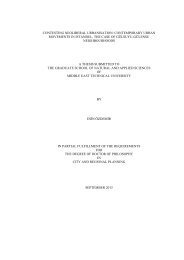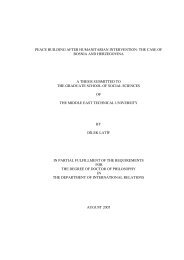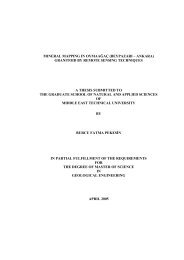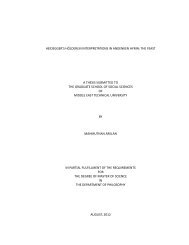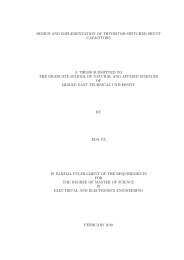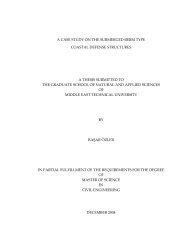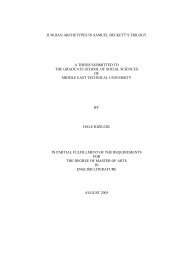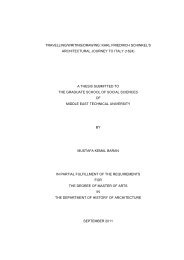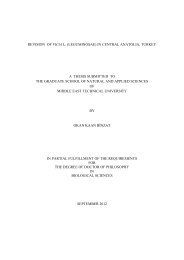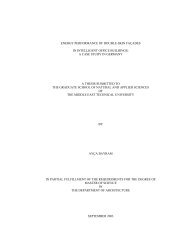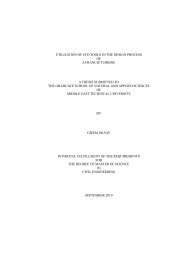View Original - Middle East Technical University
View Original - Middle East Technical University
View Original - Middle East Technical University
Create successful ePaper yourself
Turn your PDF publications into a flip-book with our unique Google optimized e-Paper software.
market is conceptually an ‘elusive’ category because Parsons’ understanding of social<br />
theory as solely a theory of analytically studied social ‘aspects’ had been a true actus<br />
reus against the Polanyian breakthroughs within economic sociology. Study of<br />
market society, in Polanyian terms, importunes a procedure that would analyse<br />
empirical economics through the concrete institutions which are the structural<br />
elements of those real economic systems. Parsonian sociology, insofar as it rebutted<br />
such a procedure strictly as empiricist and therefore false, not so reluctantly resorted<br />
to a concept of market with all its neoclassical subtext as an analytical shorthand.<br />
Here neoclassical research on market or -the economic- has rightly been the<br />
counterpart ‘exercise in abstraction’ to the sociological research on the non-economic.<br />
In these exact circumstances, post-Parsonian as well as Granovetterian ‘sociology of<br />
the market’ is complacent of this Parsonian default. While neoPolanyian theorists are<br />
astute about some of these contradictions in Granovetter, their theory of societal<br />
embeddedness is equally controversial and equally complacent of the aforementioned<br />
analytical contradiction. Polanyi’s theory is a form of system integration theory that<br />
analyses markets along its modalities of economic institutedness. There are three such<br />
modalities; namely reciprocity, redistribution and exchange. However, Polanyi’s<br />
method of analysis does not expatiate the uneven embeddedness of such forms of<br />
economy in the overall model of system integration on the basis of either the degrees<br />
of institutedness or marketness of market societies or some evolutionist model of such<br />
system integration. As such one of three institutional patterns does not abate along the<br />
inwardly contradictory passage of some contingent system integration, but infinite<br />
systematic side-by-sidedness of those patterns in all societies would ultimately kibosh<br />
any understanding of institutions as plainly economic or non-economic units.<br />
Bottomline in all this is that all three modalities of economic organisation would<br />
anticipate discrete institutional infrastructures. That is, extant and homomorphically<br />
convened social cohorts are paramount to reciprocity, so is a modicum of centricity<br />
next to a multitude of cohorts to redistribution and price-mechanical markets to<br />
exchange(Polanyi 1957:250).<br />
58



